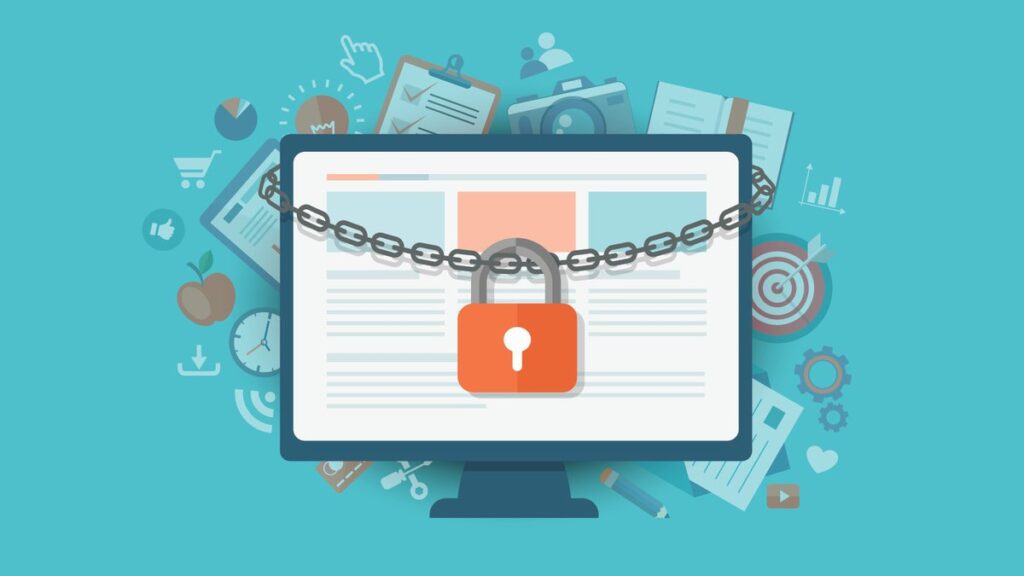
Since the internet has become mainstream around the world, it has no doubt increased the living standards of the common man. Think about it, the internet has altered how we communicate, how we learn, and how we are entertained. What’s more, the resulting unrestricted flow of information through social media has also changed the social dynamics of some countries. This widespread popularity of the internet has propelled the value of digital information, increased productivity, and made communication across borders effortless. The average person in the United States can file his/her tax returns online, check emails over their Smartphones, hold a face to face conversation with anyone using video chat, or share their personal media over social media.
You may think that the internet is the perfect invention; however you couldn’t be more wrong. The internet with all its advantages also comes with some shocking drawbacks. Foremost, with information going digital, it has given birth to a new breed of crime which is known as cybercrime.
The threat of cybercrime is so serious and devastating, that in some countries law enforcement agencies have formed a separate wing fully dedicated to cybercrime. So what makes cyber crime so formidable and tough to tackle? First of all, cyber criminals are hard to trace, in fact, these criminals can conduct their criminal activities from anywhere around the world – all they need is an active internet connection. Moreover, most of the incidents leading to e-crime tend to originate from underdeveloped countries, where they usually have no laws on cybercrime.

So what motivates cybercrime? Well, your digital information such as your credit card number, residential address, your name, and your e-tax returns can be considered good-as-gold to cyber-criminals. Simply by putting together the bits of information collected through hacking into your personal computer, criminal are easily able to assume your identity which enables them to straightforwardly apply for loans and credit-cards under your name. Once you become a casualty to cybercrime, clearing your name can become a nightmare and could take years until your case finally gets resolved.
Moving on, not all cyber-criminals are located outside of America. The U.S has its fair share of e-crooks who specialize in various types of e-crimes. One of the fastest and most disturbing types of e-crime is taking place in corporate offices around the America – theft of intellectual property. Departing or unfaithful employees who have access to classified business related data often find it morally acceptable to sell their ex-employer’s business ideas to its competitors – or perhaps leak that information on the web for competitors to see. As a result, several cases involving employee data theft have surfaced in the headlines.
So how do we prevent our businesses and our personal identities from falling victim to e-crime? Well, the answer is simple, encrypt your sensitive data. In order to prevent hackers and employees from stealing confidential information, you have to lock folders with encryption software. Moreover, to keep your identity confidential on the internet, make sure you use either a Virtual Private Network or visit websites that provide a secure connection such as HTTPS encrypted connections.
The Best Way To Protect Data
Encryption is not the best way to protect data. There are other methods of data security that should be used in addition to encryption, such as access control, data masking, and network segmentation. Encryption is just one component of a comprehensive data security strategy.
Data Encryption How And Its Use
Data encryption is the process of encoding data in such a way that only authorized parties can access it. It is a key component of a comprehensive data security strategy. Encryption is useful to ensure security of data because it scrambles the data so it is unreadable to anyone without the correct decryption key. This makes it much harder for malicious actors to access or modify the data, as they would need to have the correct decryption key.
Encryption The Sole Security Method
No, encryption is not the sole security method to ensure data is protected. It should be used in combination with other security measures such as access control, authentication, and monitoring. For example, access control can be used to restrict who has access to the data, authentication can be used to verify the identity of the user accessing the data, and monitoring can be used to detect any suspicious activity. Additionally, data should be backed up regularly and stored in a secure location.
Most Effective Method To Protect Data
The most effective method to protect data is to use a combination of security measures such as access control, authentication, encryption, and monitoring. Access control restricts who has access to the data, authentication verifies the identity of the user accessing the data, encryption scrambles the data so that it cannot be read without the key, and monitoring detects any suspicious activity. Additionally, data should be backed up regularly and stored in a secure location.
Benefits Of Encryption
The primary benefit of encryption is that it ensures data security and privacy. Encryption scrambles data so that it can only be read with the correct key, which means that only authorized users can access the data. Encryption also prevents data from being altered, ensuring that the data is authentic and accurate. Additionally, encryption can help protect data from malicious attacks such as hacking, malware, and viruses.
Main Function Of Encryption
The main function of encryption is to protect data from unauthorized access. Encryption scrambles data so that it can only be read with the correct key, which means that only authorized users can access the data. Encryption also prevents data from being altered, ensuring that the data is authentic and accurate.
Technique Used For Security Of Data
The most commonly used technique for data security is encryption. Encryption is a process of encoding data so that it can only be read by those who have the correct key or password. This makes it difficult for unauthorized users to access the data. Other techniques used for data security include authentication, access control, and data integrity.
Most Secure Encryption Method
The most secure encryption method is considered to be end-to-end encryption. This method encrypts data at the source and decrypts it only at the destination, making it impossible for anyone in between to access the data. This ensures that the data is secure and cannot be intercepted or modified. Additionally, this method also offers the highest level of security as it is difficult to crack.
Why Is Encryption Not Enough?
Encryption is not enough to ensure data security because it only prevents unauthorized access to the data. It does not protect against malicious attacks or malicious actors who may be able to access the data by other means. Additionally, encryption does not guarantee data integrity, as malicious actors could still modify the data without detection. Therefore, additional security measures such as authentication, access control, and data integrity must be employed to ensure complete data security.
Features Of Encryption
Encryption is a way of securing data by transforming it into a form that is unreadable by anyone other than the intended recipient. The main features of encryption include:
1. Confidentiality: Encryption ensures that only the intended recipient can access the data.
2. Integrity: Encryption ensures that the data is not modified or tampered with during transmission.
3. Authentication: Encryption ensures that the sender and receiver can verify each other’s identity.
Most Secure Way To Transmit Data
The most secure way to transmit data is to use a secure protocol such as TLS/SSL or IPSec. These protocols use encryption to ensure that the data is kept confidential and that it is not modified or tampered with during transmission. Additionally, the use of digital certificates can help to authenticate the sender and receiver of the data.
Powered by NewSoftwares.net
